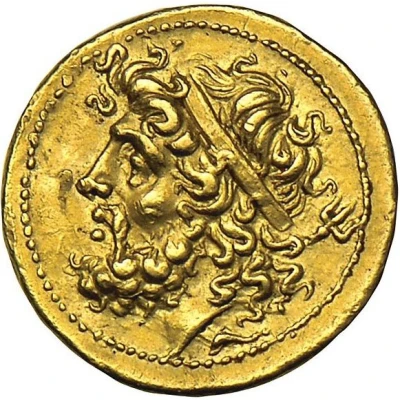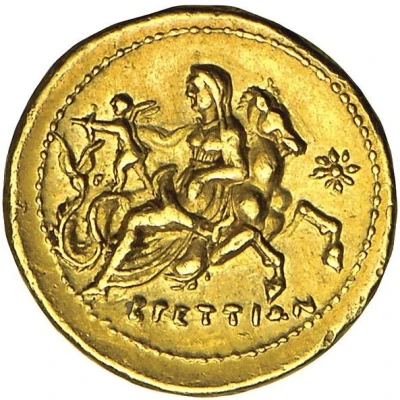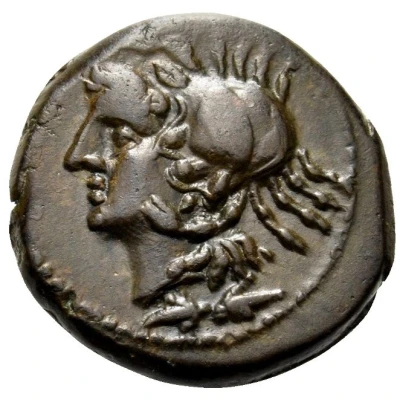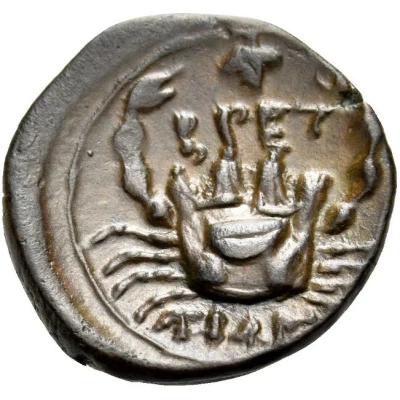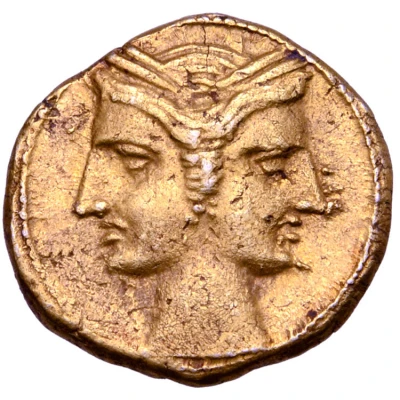
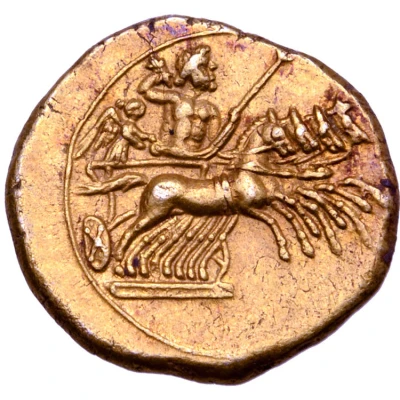

© Roma Numismatics Limited
⅜ Shekel Carthaginian occupation of Bruttium 216 BC - 211 BC
| Electrum | 2.98 g | 16 mm |
| Issuer | Brettii (Bruttium) |
|---|---|
| Period | Second Punic War (218 BC - 203 BC) |
| Type | Standard circulation coin |
| Years | 216 BC - 211 BC |
| Value | ⅜ Shekel |
| Currency | Shekel |
| Composition | Electrum |
| Weight | 2.98 g |
| Diameter | 16 mm |
| Shape | Round (irregular) |
| Technique | Hammered |
| Orientation | Variable alignment ↺ |
| Demonetized | Yes |
| Updated | 2024-10-09 |
| Numista | N#196069 |
|---|---|
| Rarity index | 100% |
Reverse
Zeus, holding thunderbolt in right hand and sceptre in left, standing in quadriga right, driven by Nike, who holds reins.
Comment
While it is likely that this issue was minted in Bruttium by the Carthaginians, there is a possibility that these coins were struck in Carthage and transported to South Italy for Hannibal's use (see G.K. Jenkins, “Some coins of Hannibal’s time,” Studi per Laura Breglia, Parte I, Generalia-Numismatica Greca. Bollettino di Numismatica, Supplemento al No. 4. [Rome, 1987], pp. 223-4).
Interesting fact
One interesting fact about this coin is that it was used during the Carthaginian occupation of Bruttium, which was a region in southern Italy. The coin features the image of a lion's head, which was a common symbol used by the Carthaginians, and it is believed to have been minted in the city of Brettii (now known as Brindisi) during the reign of the Carthaginian general Hannibal. Despite being made of electrum, a naturally occurring alloy of gold and silver, the coin has a relatively low weight of 2.98 grams, which suggests that it may have been used for smaller transactions or as a token of value rather than as a large denomination coin.
Price
| Date | Mintage | VG | F | VF | XF | AU | UNC |
|---|---|---|---|---|---|---|---|
| ND (216 BC - 211 BC) | - | - | - | - | - | - |
Values in the table are based on evaluations by sales realized on Internet platforms. They serve as an indication only for ⅜ Shekel (Carthaginian occupation of Bruttium) (216 BC - 211 BC) coin.
